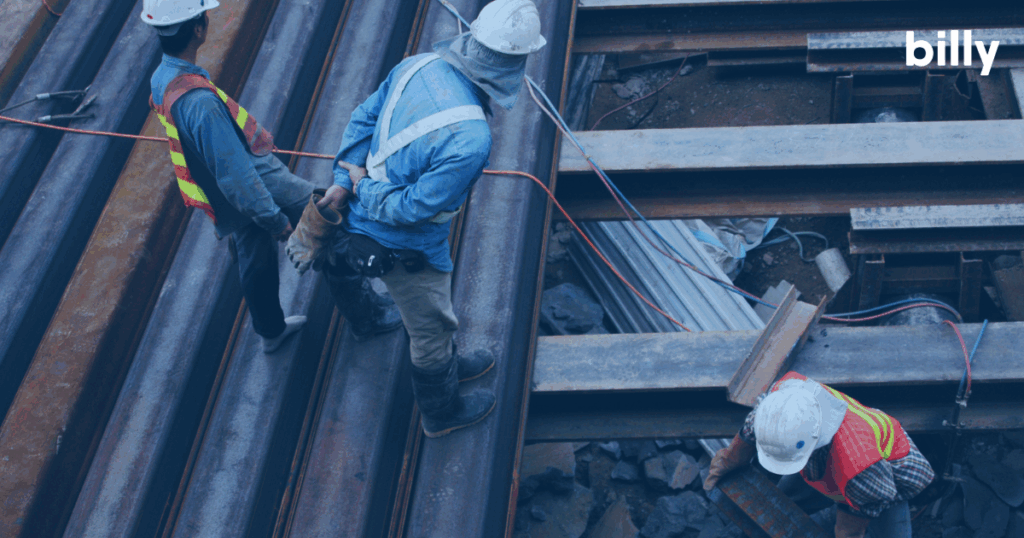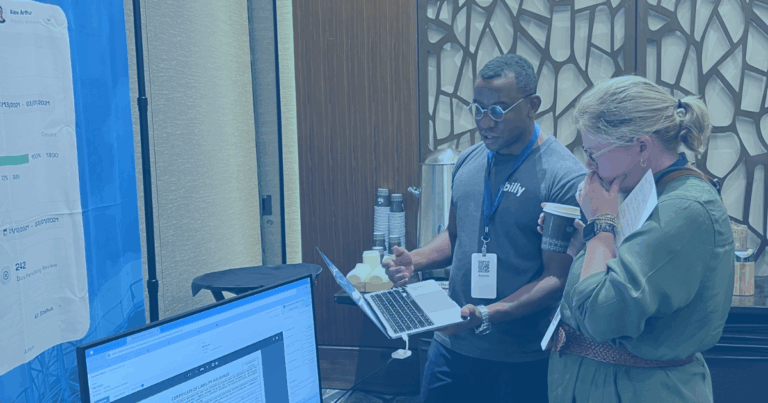Fall is a pivotal time for construction projects. It signals the end of the construction season in many regions, and with that comes a unique set of challenges. Project managers are working to close out tasks, subcontractors are finalizing their work, and compliance officers are making sure that every piece of documentation is accurate and up to date. During this period, effective risk management becomes essential, and COI tracking plays a central role in keeping projects on schedule and protecting businesses from liability.
Certificates of insurance (COIs) serve as proof that all parties involved have the necessary coverage to operate safely and legally on a project. When COIs are missing, expired, or inaccurate, projects can face serious consequences, from delays to legal disputes. For many teams, managing COIs manually can be overwhelming, especially during the busy fall season. Digital solutions, like Billy, can help by automating reminders, centralizing documentation, and making it easier for teams to stay compliant without adding administrative burden.
Why Fall Is Critical for Construction Project Management and Compliance
The fall season presents unique operational challenges for construction projects. Shorter daylight hours and unpredictable weather patterns, such as sudden rain or early snowfall, can impact timelines and require flexibility in scheduling. These changes increase the importance of efficient planning and proactive management.
Compliance becomes especially critical during this period. Every COI must be verified and up to date to avoid liabilities. Additionally, contractors and subcontractors may have multiple projects running concurrently, making it easy for documentation to fall through the cracks. Managers and compliance officers need reliable systems in place to track each COI accurately and ensure that all parties meet insurance requirements.
Failing to maintain proper compliance can lead to penalties, project delays, or even halted work. Beyond regulatory consequences, missed or outdated COIs can create financial exposure for the company if an accident or property damage occurs. This makes fall a pivotal time for auditing and updating COI records, reinforcing the need for robust tracking practices.
The Importance of COI Tracking During the Fall Construction Season
COI tracking is a cornerstone of risk management, particularly as projects near completion. With multiple subcontractors on site and overlapping project schedules, the chance of errors increases if documentation is not closely monitored. This is especially true in the fall, when teams are juggling seasonal changes, tighter deadlines, and finishing tasks that have been in progress all year.
Outdated or missing COIs can lead to serious financial and legal consequences. For example, if an accident occurs and a subcontractor’s insurance has lapsed, the primary contractor may be held liable for damages. Beyond the financial impact, project delays caused by non-compliance can harm relationships with clients and subcontractors and damage a company’s reputation.
Using a centralized COI tracking solution reduces these risks. Automation helps by sending reminders for expiring policies and allowing compliance officers to review documentation quickly and accurately. Platforms like Billy are designed to streamline this process, offering a single hub for COI management that reduces manual tracking errors and ensures teams have real-time access to the information they need.
Common COI Tracking Challenges for Project Managers and Compliance Officers
Managing COIs manually can be time-consuming and prone to mistakes. Project managers may struggle with integrating new tracking systems into existing workflows, while compliance officers face the challenge of verifying numerous certificates from multiple subcontractors. These tasks can become overwhelming, especially as project schedules tighten in the fall.
Some of the most common challenges include:
- Manual errors: Tracking COIs using spreadsheets or paper files increases the risk of mistakes, which can lead to non-compliance.
- Verification complexity: Ensuring each COI is accurate, current, and meets contract requirements requires meticulous review.
- System integration gaps: Consolidating information from multiple sources, such as different subcontractors or insurance providers, can be cumbersome.
Addressing these challenges requires careful planning, clear communication, and sometimes the adoption of technology solutions that simplify and automate the process. Digital COI management tools can significantly reduce the administrative load, improve accuracy, and provide a clear audit trail.

Leveraging Digital Technology and Automation for COI Tracking
Digital platforms can revolutionize how construction teams manage COIs. Automated solutions minimize human error, reduce the time spent on manual tracking, and allow teams to focus on project execution rather than paperwork.
With a centralized system, compliance officers can quickly access all necessary COIs and track expiration dates in real time. Automation also allows project managers to receive alerts about upcoming renewals, ensuring that nothing is overlooked. This is particularly valuable during the fall, when multiple projects are wrapping up and deadlines are pressing.
Centralized COI platforms also enhance communication among team members and stakeholders. Everyone involved in the project has access to the most current documentation, which promotes transparency and reduces the risk of discrepancies. By leveraging these tools, teams can not only maintain compliance but also improve overall project efficiency.
Implementing Automated COI Tracking
Transitioning to automated COI tracking requires a structured approach. Start by assessing your current COI management process and identifying areas where errors or inefficiencies occur. Understanding these gaps will help in selecting a solution that fits your team’s workflow.
Next, research COI tracking platforms that offer automation and integration capabilities. Choosing a user-friendly system ensures that team members can adopt it quickly, minimizing disruptions to ongoing projects.
Training is a crucial component of successful implementation. Team members should be familiar with key features, know how to upload and verify documents, and understand how automated alerts function. Once the system is in place, ongoing monitoring and adjustments ensure that it continues to meet the needs of the team.
Platforms like Billy can simplify this entire process, providing an intuitive interface, automated reminders, and centralized document storage, all of which help construction teams maintain compliance without adding administrative overhead.
Preparing for the End of the Construction Season
As the construction season comes to a close, it’s essential to conduct thorough audits of all COI documentation and compliance practices. This provides insight into areas that may need improvement and ensures that no gaps are overlooked. Lessons learned during these audits can inform process improvements for future projects, making the next season more efficient and less prone to compliance issues.
Adjustments might include revising timelines for COI verification, implementing new procedures for document submission, or upgrading digital tools for better tracking. Proactively refining these processes ensures that the team is prepared for seasonal challenges and reduces the risk of delays or compliance violations in the future.
Setting Your Fall Projects Up for Success
Fall is a critical time for construction projects, and maintaining effective COI tracking is essential for reducing risk and ensuring smooth operations. Automated and centralized solutions can greatly simplify this process, allowing project managers and compliance officers to focus on finishing tasks rather than managing paperwork.
Prioritizing COI tracking and compliance now sets the stage for a successful end to the construction season and positions teams for efficiency in the upcoming year. Billy provides the tools needed to keep COIs up to date, reduce errors, and maintain a clear audit trail, making it easier for construction teams to stay compliant and organized.
By embracing digital solutions and proactive strategies, construction projects can wrap up successfully this fall and enter the next season well-prepared.
Frequently Asked Questions
Project managers often face manual tracking errors, verification issues, and difficulty consolidating multiple COIs from subcontractors. Digital solutions can streamline processes and minimize mistakes.
Automation centralizes documentation, provides real-time alerts for expiring COIs, and simplifies audits. Platforms like Billy help teams stay organized, compliant, and efficient throughout the construction season.
Organizing COIs for several subcontractors can be complex. Using digital platforms allows teams to centralize documents, set reminders for expirations, and streamline verification—saving time and reducing errors.






